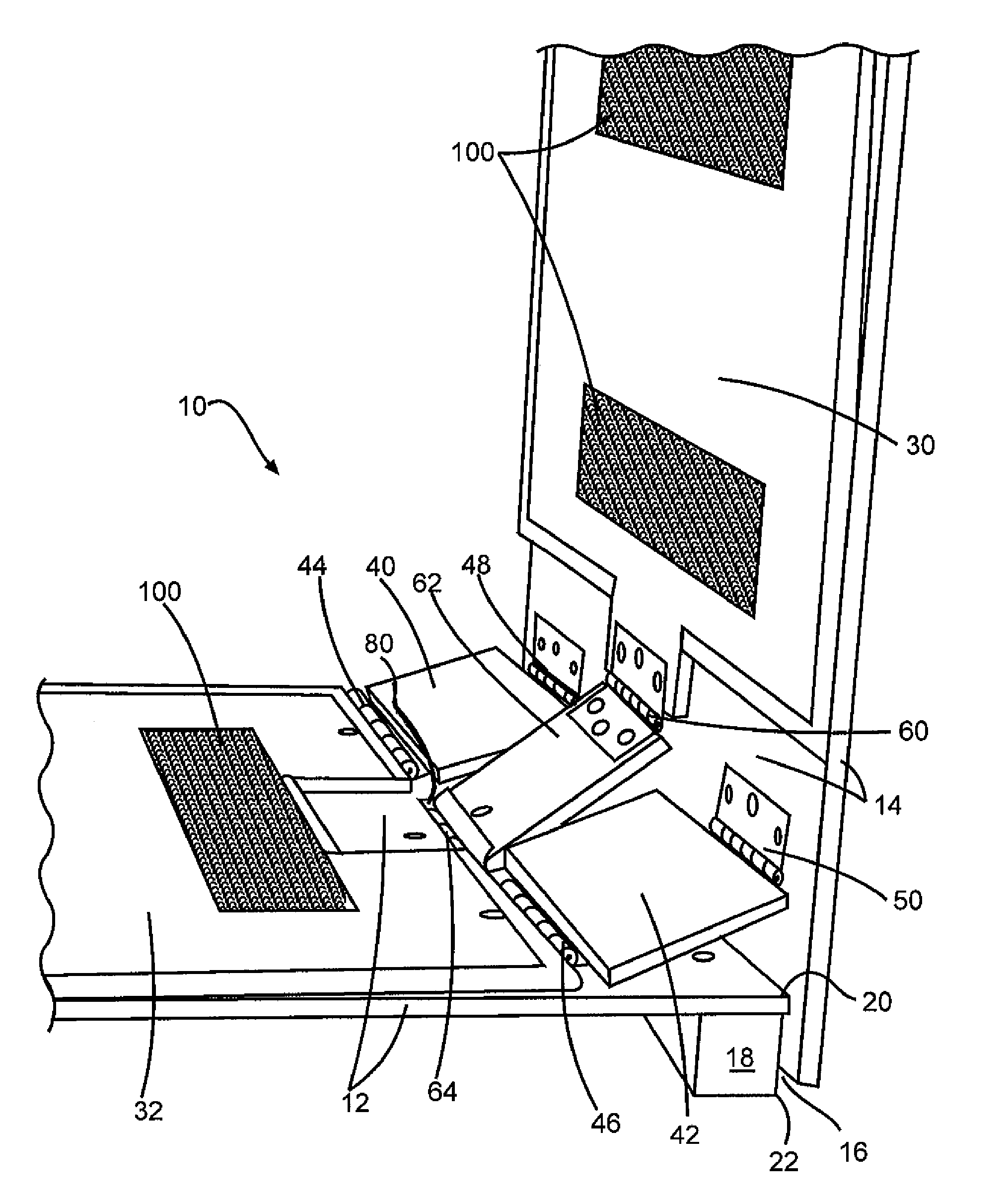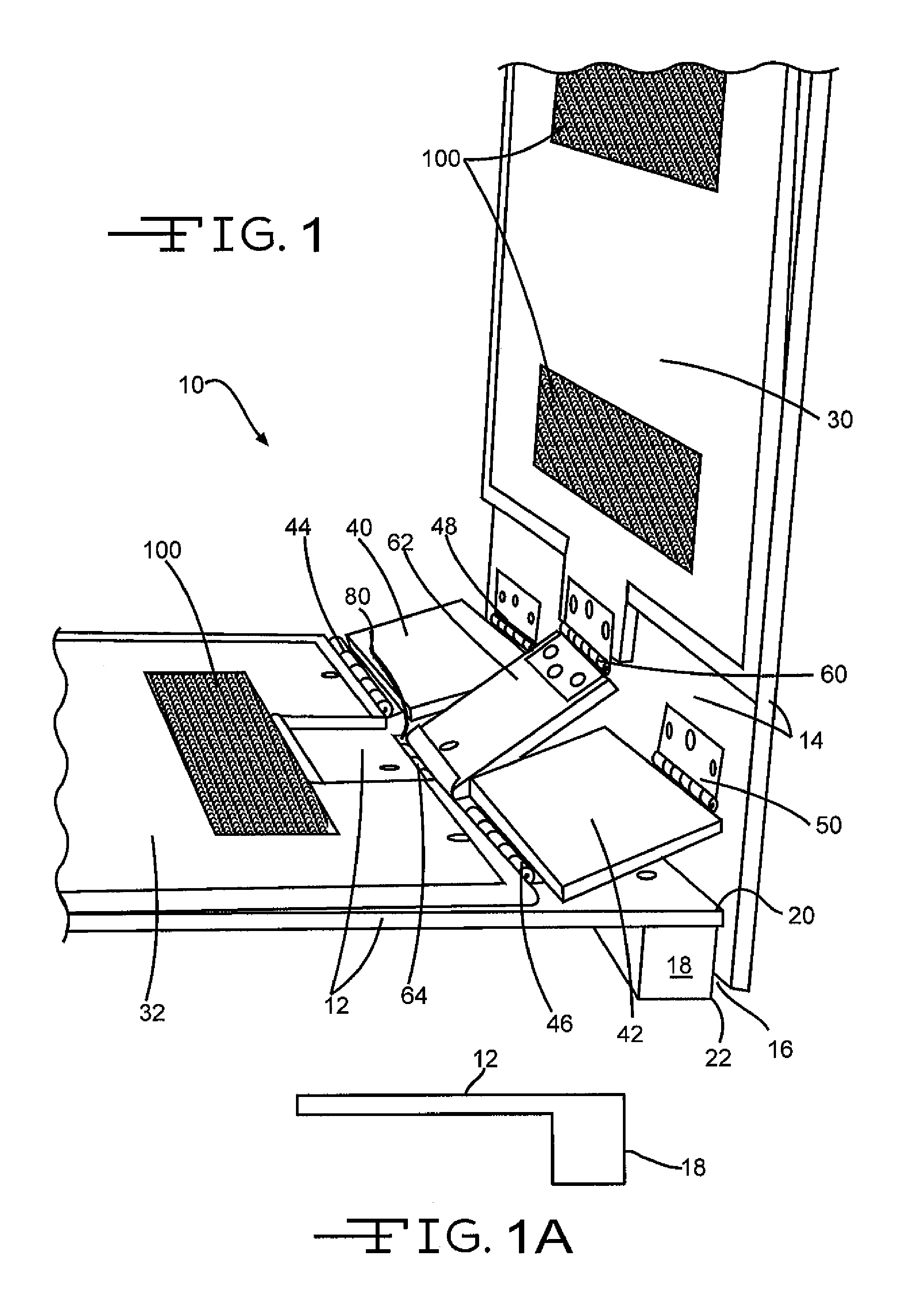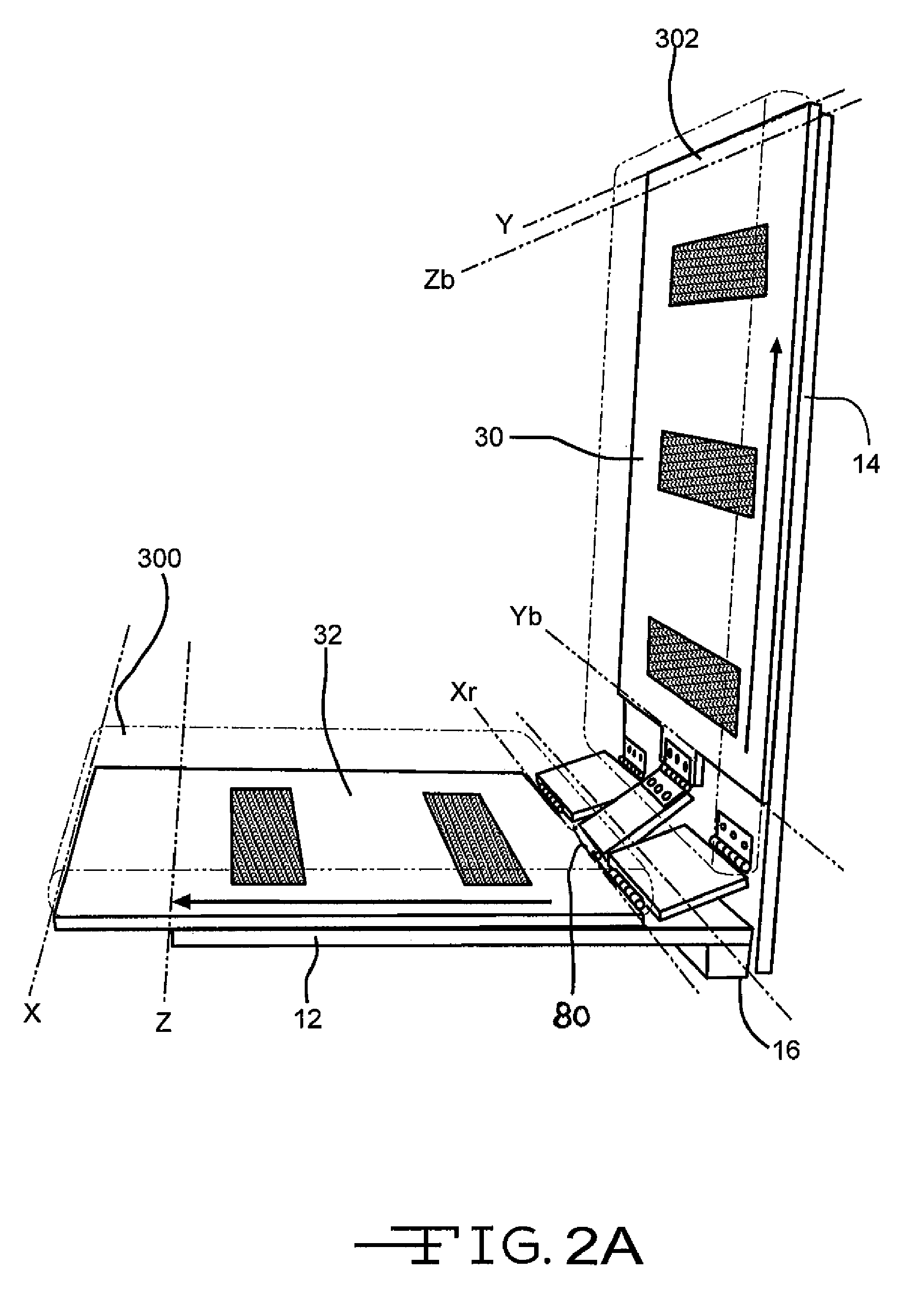Decreased skin shear device
a skin shear and skin technology, applied in the direction of wheelchairs/patient conveyances, movable seats, wheelchairs, etc., can solve the problems of high degree of shear force to the user, and achieve the effect of reducing the concern about shear force, and reducing the degree of skin shear
- Summary
- Abstract
- Description
- Claims
- Application Information
AI Technical Summary
Benefits of technology
Problems solved by technology
Method used
Image
Examples
Embodiment Construction
[0015]FIG. 1 illustrates shear reducing apparatus 10 having a seat plate 12 pivotally attached to back plate 14 at point 16 through an offset unit 18. The offset unit 18 is a quarter inch to 3 inch device positioned at the seat plate's proximal end 20. The seat plate's proximal end 20 and the offset unit 18 proximal end 22 can be in the same plane and preferably are. It should be noted that the offset unit 18 can be (a) a separate and distinct piece from the seat plate 12 that is attached to the seat plate 12 or (b) an extension of the seat plate 12 so the seat plate 12 and the offset unit 18 are the same piece as shown in FIG. 1A.
[0016]Positioned over the back plate 14 is a back slide plate 30 and positioned over the seat plate 12 is a seat slide plate 32.
[0017]Back slide plate 30 is attached at hinge point 60 to back transition plate 62. Back transition plate 62 (a) is attached to seat plate 12 at hinge point 64 and (b) positioned within a seat plate opening 80. The hinge point 64...
PUM
 Login to View More
Login to View More Abstract
Description
Claims
Application Information
 Login to View More
Login to View More - R&D
- Intellectual Property
- Life Sciences
- Materials
- Tech Scout
- Unparalleled Data Quality
- Higher Quality Content
- 60% Fewer Hallucinations
Browse by: Latest US Patents, China's latest patents, Technical Efficacy Thesaurus, Application Domain, Technology Topic, Popular Technical Reports.
© 2025 PatSnap. All rights reserved.Legal|Privacy policy|Modern Slavery Act Transparency Statement|Sitemap|About US| Contact US: help@patsnap.com



